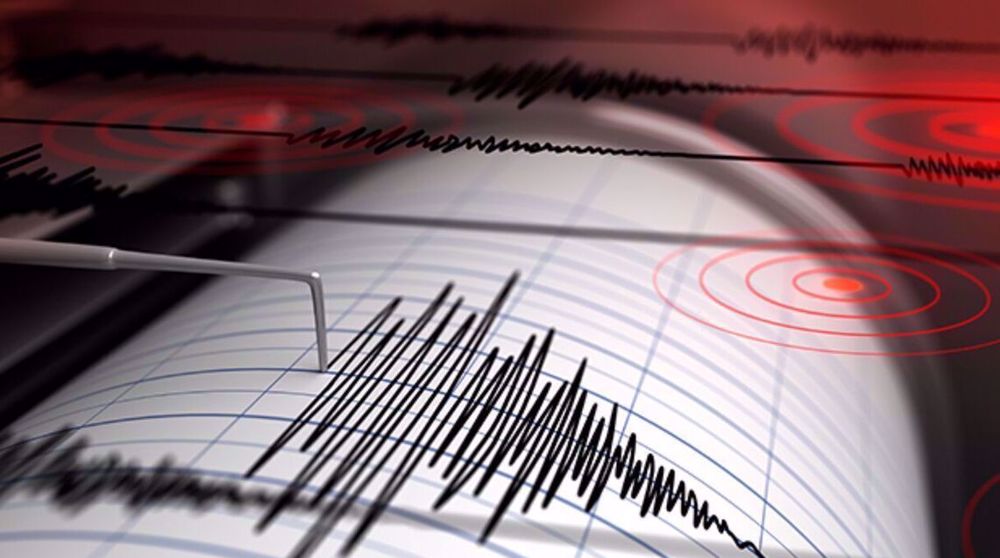NASA's Mars helicopter succeeds in historic first flight
NASA's miniature robot helicopter Ingenuity performs a successful takeoff and landing on Mars, achieving the first powered, controlled flight by an aircraft over the surface of another planet, the US space agency says.
The twin-rotor whirligig's debut on the Red Planet marked a 21st-century Wright Brothers moment for NASA, which said success could pave the way for new modes of exploration on Mars and other destinations in the solar system, such as Venus and Saturn's moon Titan.
Mission managers at NASA's Jet Propulsion Laboratory (JPL) near Los Angeles burst into applause and cheers as engineering data beamed back from Mars confirmed that the 4-pound (1.8-kg) solar-powered helicopter had performed its maiden 40-second flight precisely as planned three hours earlier.
The robot rotorcraft was programmed to ascend 10 feet (3 meters) straight up, then hover and rotate in place over the Martian surface for half a minute before settling back down on its four legs.
During NASA's presentation of the event livestreamed from JPL headquarters, mission managers also displayed the first images from the flight.

A black-and-white photo taken by a downward-pointing onboard camera while the helicopter was aloft showed the distinct shadow cast by Ingenuity in the Martian sunlight onto the ground just below it.
And a snippet of color video footage captured by a separate camera mounted on the NASA's Mars rover Perseverance, parked about 200 feet away, showed the helicopter in flight against the orange-colored landscape surrounding it.
"We can now say that human beings have flown an aircraft on another planet," said MiMi Aung, Ingenuity project manager at JPL.
Despite the flight's brevity, it marked a historic feat in interplanetary aviation, taking place on an "air field" 173 million miles from Earth on the floor of a vast Martian basin called Jezero Crater.
NASA likened the achievement to the Wright Brothers' first controlled flight of their motor-driven airplane near Kitty Hawk, North Carolina, in December 1903 - a takeoff and landing that covered just 120 feet (37 meters) in 12 seconds.
Paying tribute to that modest but monumental first flight, NASA engineers affixed a tiny swath of wing fabric from the original Wright flyer under Ingenuity's solar panel before sending it on its way to Mars.
The tiny rotorcraft was carried to the Red Planet strapped to the belly of the Mars rover Perseverance, a six-wheeled astrobiology lab that touched down in Jezero Crater on February 18 after a nearly seven-month journey through space.
Ingenuity was developed as a technology demonstration, separate from Perseverance's primary mission to search for traces of ancient microorganisms and collect samples of Martian rock for eventual return to Earth for further analysis.
With the helicopter's first outing deemed a success, NASA plans to send the aircraft on several additional, progressively more ambitious flights in the weeks ahead.
Building a helicopter that could fly on Mars posed a major challenge for JPL engineers.
While Mars possesses much less gravity to overcome than Earth, its atmosphere is just 1% as dense, making it especially difficult to generate aerodynamic lift. To compensate, engineers equipped Ingenuity with rotor blades that are larger (four feet long) and spin far more rapidly than would be needed on Earth for a similar aircraft of its size.
The design was successfully tested in vacuum chambers built at JPL to simulate Martian conditions, but it remained to be seen whether Ingenuity would actually fly on the fourth planet from the sun, until Monday.
Because of the enormous distances involved, Ingenuity was designed to execute pre-programmed flight instructions autonomously, using sophisticated onboard pilot and navigation systems.
The small, lightweight aircraft also had to withstand punishing cold, with nighttime temperatures dropping as low as 130 degrees below zero Fahrenheit (minus 90 degrees Celsius), using solar power alone to recharge and keep its internal components properly heated.
Technology demonstration
NASA had originally planned the flight for April 11 but postponed it over a software issue that was identified during a planned high-speed test of the aircraft's rotors.
The issue was later resolved through the help of a software update and tweak in coding.
Ingenuity traveled to Mars attached to the underside of Perseverance, which touched down on the planet on February 18 on a mission to search for signs of extraterrestrial life.
Ingenuity's goal, by contrast, is to demonstrate its technology works, and it won't contribute to Perseverance's science goals.

But it is hoped that Ingenuity can pave the way for future flyers that revolutionize our exploration of celestial bodies because they can reach areas that rovers can't go, and travel much faster.
"We don't know exactly where Ingenuity will lead us, but today's results indicate the sky -- at least on Mars -- may not be the limit," said acting NASA Administrator Steve Jurczyk.
The flight was challenging because of conditions vastly different from Earth's -- an atmosphere that has less than one percent the density of our own, and gravitational pull of only a third.
That made it necessary for Ingenuity's rotors to achieve around 2,500 revolutions per minute, roughly five times greater than helicopters achieve on Earth.
As well as high-tech components, the aircraft contains many off-the-shelf smartphone parts that were tested in space for the first time on this mission.
Next flight soon
Ingenuity was deployed to its "flight strip" on April 3 and is now in the 16th sol, or Martian day, of its 30-sol (31-Earth day) flight test window.
The team will continue to receive and analyze data in the coming days, then formulate a plan for the second flight, which would be no earlier than April 22.
"We will take a moment to celebrate our success and then take a cue from Orville and Wilbur regarding what to do next," said Aung.
"History shows they got back to work -- to learn as much as they could about their new aircraft -- and so will we."
(Source: Agencies)
VIDEO | Press TV's news headlines
Iranian satellites launched into space as private sector debuts in space industry
VIDEO | Iran, Azerbaijan conduct joint maritime rescue operations
VIDEO | Yemen’s Red Sea divide: Naval forces block Israeli-linked ships in strategic ‘parting of the water’
VIDEO | Southern Gaza: Israel’s facade for famine and suffering
VIDEO | IOF hampering humanitarian aid
VIDEO | Sharmahd: Justice Done
Iran repeatedly warned Israel not to test its will: FM









 This makes it easy to access the Press TV website
This makes it easy to access the Press TV website